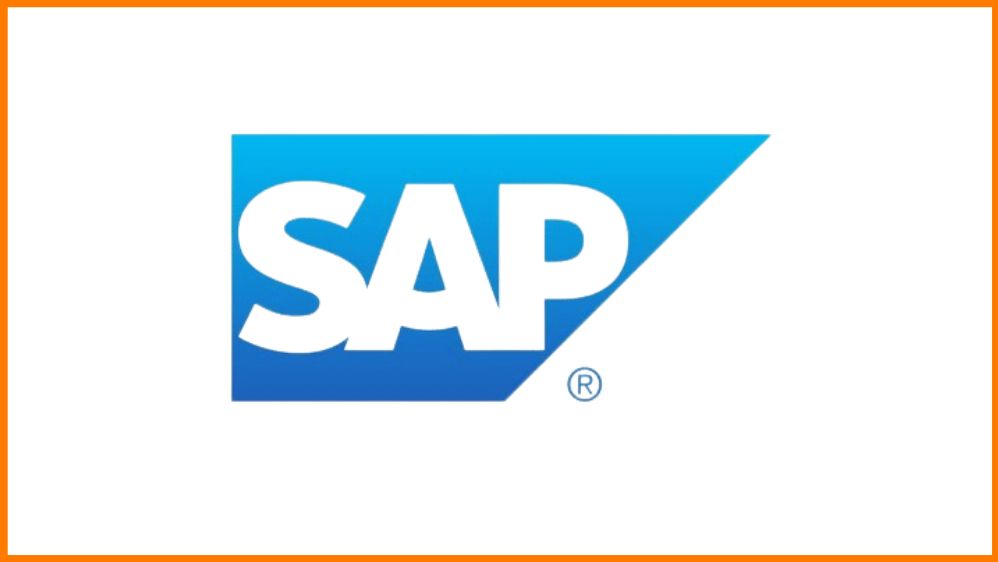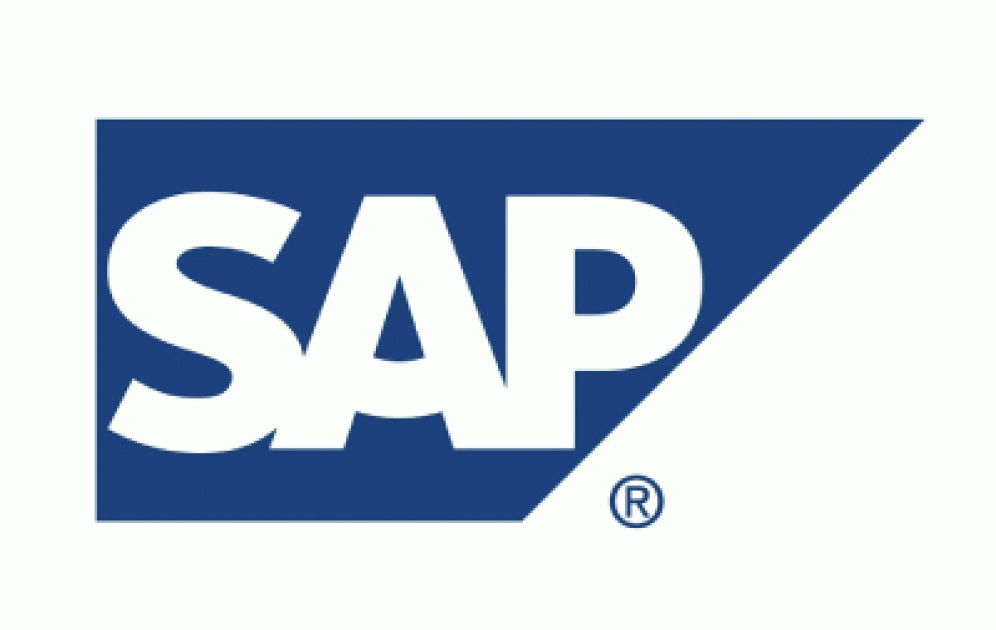SAP Reports Q2 Beat, But Cloud Revenue Worse Than Expected

SAP SE (NYSE:SAP) reported its Q2 earnings results on Thursday, with a profit of €0.62 per share on revenue of €7.55 billion, compared to the Street estimate of €0.54 and €7.2 billion, respectively.
However, SAP's Cloud and software revenue was reported at €6.51 billion, falling short of the average analyst expectations. Similarly, cloud-only revenue came in at €3.32 billion, also below analysts' expectations. Despite this, the cloud revenue showed a year-over-year increase of 22% at constant currency rates.
SAP adjusted its full-year operating profit outlook modestly, raising it to a range of €8.65 to €8.95 billion, up from the prior forecast of €8.6 to €8.9 billion. Nevertheless, the cloud revenue forecast was lowered to €14.1 billion, down from the previous forecast of €14.2 billion.
| Symbol | Price | %chg |
|---|---|---|
| CRM.BA | 21250 | -0.33 |
| GOTO.JK | 60 | 1.67 |
| 012510.KS | 89100 | -3.03 |
| 462870.KS | 38350 | -1.17 |

SAP SE (NYSE:SAP) Earnings Preview: A Look at the Upcoming Quarterly Results
- SAP SE (NYSE:SAP) is set to release its quarterly earnings on October 22, 2025, with an expected EPS of $1.69 and revenue of $9.09 billion.
- The company's strategic initiatives and integration of AI are driving significant growth, with cloud revenue increasing by 24% in the second quarter.
- SAP's financial health remains strong, with a P/E ratio of approximately 42.75 and a debt-to-equity ratio of 0.21.
SAP SE, listed on the NYSE under the symbol SAP, is a global leader in enterprise application software. The company is renowned for its Cloud ERP solutions, which have seen increased demand. SAP's competitors include Oracle and Microsoft in the enterprise software market. The company is set to release its quarterly earnings on October 22, 2025, with analysts estimating earnings per share (EPS) of $1.69 and revenue of $9.09 billion.
SAP's upcoming earnings announcement is anticipated to reflect a strong performance, driven by robust demand for its Cloud ERP solutions and significant AI adoption. Analysts expect an EPS of $1.69, marking a 25.2% increase from the previous year. Revenue is projected to reach $10.6 billion, a 13.5% rise from the same period last year, as highlighted by Zacks.
SAP's strategic initiatives, such as "Rise with SAP" and "Grow with SAP," have been pivotal in driving a 24% increase in cloud revenue during the second quarter. The integration of AI through Joule and the introduction of 14 new AI agents have further enhanced productivity and profit growth. Over the past year, SAP's stock has risen by 18.9%, slightly trailing the Computers - Software industry's growth of 20.6%.
SAP has consistently exceeded earnings expectations in the last four quarters, with an average beat of 7%. The company's financial metrics, such as a price-to-earnings (P/E) ratio of approximately 42.75 and a price-to-sales ratio of about 7.85, indicate the value investors place on its earnings and sales. The enterprise value to sales ratio is around 7.87, suggesting the company's total valuation relative to its sales.
SAP's financial health is further underscored by its debt-to-equity ratio of 0.21, indicating a relatively low level of debt compared to equity. The current ratio of approximately 1.03 suggests that SAP has a slightly higher level of current assets compared to its current liabilities, reflecting its ability to meet short-term obligations.

SAP SE (NYSE:SAP) Quarterly Earnings Preview: A Look at the Future of Enterprise Software
- Earnings per share (EPS) is estimated at $1.63, aligning with the Zacks Consensus Estimate and indicating a 38% increase from the previous year.
- Projected revenue for the period is approximately $9.1 billion, with Zacks estimating a higher figure of $10.4 billion, reflecting a 16.47% rise from the prior year.
- SAP's growth is significantly driven by its cloud ERP segment, which saw a 27% surge in revenues, and its investments in artificial intelligence aiming to boost productivity by 30% by the end of 2025.
SAP SE (NYSE:SAP) is a global leader in enterprise application software, providing solutions that help businesses streamline processes and drive innovation. The company is known for its robust cloud ERP offerings and has been making significant investments in artificial intelligence to enhance its product suite. SAP competes with other major players in the software industry, such as Oracle and Microsoft.
On July 22, 2025, SAP is set to release its quarterly earnings, with Wall Street analysts estimating an earnings per share (EPS) of $1.63. This figure aligns with the Zacks Consensus Estimate, which also anticipates a 38% increase from the previous year. SAP's revenue for this period is projected to be approximately $9.1 billion, although the Zacks estimate suggests a higher figure of $10.4 billion, reflecting a 16.47% rise from the prior year.
SAP's growth is largely driven by its cloud ERP segment, which saw a 27% surge in revenues during the first quarter. The Cloud ERP Suite alone contributed to 85% of total cloud sales. The "RISE with SAP" initiative is expanding with new tools like LeanIX, Signavio, and WalkMe, which are designed to enhance business transformation. These developments are expected to bolster SAP's performance in the upcoming earnings report.
The company is also making significant strides in artificial intelligence, with over 30,000 developers working to boost productivity by 30% by the end of 2025. This focus on AI is part of SAP's strategy to maintain its competitive edge and drive future growth. Over the past year, SAP's shares have rallied by 56.5%, outpacing the broader Computers - Software industry.
SAP's financial metrics provide further insight into its market position. The company has a price-to-earnings (P/E) ratio of approximately 53.50, indicating the price investors are willing to pay for each dollar of earnings. Its price-to-sales ratio stands at about 8.72, while the enterprise value to sales ratio is around 8.40. These figures reflect the value placed on SAP's sales and overall valuation. Additionally, SAP's current ratio of 1.17 suggests a reasonable level of liquidity to cover short-term liabilities.

SAP Lifts 2025 Forecasts, Riding High on Cloud Growth and Business AI Momentum
SAP SE (NYSE:SAP) raised its fiscal 2025 outlook on Tuesday, projecting a substantial boost in operating profit, fueled by accelerating cloud revenue and its strengthened foothold in business AI and data capabilities.
The enterprise software giant now anticipates operating profit to range between €10.3 billion and €10.6 billion ($10.75 billion–$11.06 billion), marking a 26%–30% increase at constant currencies compared to 2024. This is an upgrade from its previous guidance of €10.2 billion in operating profit, alongside total revenue of over €37.5 billion and cloud revenue surpassing €21.5 billion.
Cloud revenue, a cornerstone of SAP's growth strategy, is forecasted to climb 26%–28%, reaching between €21.6 billion and €21.9 billion in 2025. This growth is underpinned by sustained demand for the company’s flagship Cloud ERP Suite and its RISE with SAP offering, which facilitates the shift to cloud-based enterprise solutions for businesses worldwide.
In the fourth quarter, SAP’s cloud revenue rose 27% to €4.71 billion, with the cloud gross margin improving by 1.3 percentage points to 73.5%. Overall quarterly revenue grew 11% year-over-year to €9.38 billion, and non-IFRS operating profit advanced 24% to €2.44 billion.

SAP Lifts 2025 Forecasts, Riding High on Cloud Growth and Business AI Momentum
SAP SE (NYSE:SAP) raised its fiscal 2025 outlook on Tuesday, projecting a substantial boost in operating profit, fueled by accelerating cloud revenue and its strengthened foothold in business AI and data capabilities.
The enterprise software giant now anticipates operating profit to range between €10.3 billion and €10.6 billion ($10.75 billion–$11.06 billion), marking a 26%–30% increase at constant currencies compared to 2024. This is an upgrade from its previous guidance of €10.2 billion in operating profit, alongside total revenue of over €37.5 billion and cloud revenue surpassing €21.5 billion.
Cloud revenue, a cornerstone of SAP's growth strategy, is forecasted to climb 26%–28%, reaching between €21.6 billion and €21.9 billion in 2025. This growth is underpinned by sustained demand for the company’s flagship Cloud ERP Suite and its RISE with SAP offering, which facilitates the shift to cloud-based enterprise solutions for businesses worldwide.
In the fourth quarter, SAP’s cloud revenue rose 27% to €4.71 billion, with the cloud gross margin improving by 1.3 percentage points to 73.5%. Overall quarterly revenue grew 11% year-over-year to €9.38 billion, and non-IFRS operating profit advanced 24% to €2.44 billion.

SAP Earns an Upgrade at BMO Capital
BMO Capital analysts upgraded SAP (NYSE:SAP) to Outperform from Market Perform and increased their price target on the stock to $237 from $218. The analysts highlighted that SAP has strong visibility into bookings and revenues for the upcoming years, driven primarily by the conversion of its extensive and loyal installed base to cloud offerings.
Key catalysts for the stock include a steady growth pace in the Current Cloud Backlog and Cloud ERP, along with achieving significant milestones towards the goal of €8 billion in free cash flow by fiscal 2025.

SAP Reports Q2 Beat, But Cloud Revenue Worse Than Expected
SAP SE (NYSE:SAP) reported its Q2 earnings results on Thursday, with a profit of €0.62 per share on revenue of €7.55 billion, compared to the Street estimate of €0.54 and €7.2 billion, respectively.
However, SAP's Cloud and software revenue was reported at €6.51 billion, falling short of the average analyst expectations. Similarly, cloud-only revenue came in at €3.32 billion, also below analysts' expectations. Despite this, the cloud revenue showed a year-over-year increase of 22% at constant currency rates.
SAP adjusted its full-year operating profit outlook modestly, raising it to a range of €8.65 to €8.95 billion, up from the prior forecast of €8.6 to €8.9 billion. Nevertheless, the cloud revenue forecast was lowered to €14.1 billion, down from the previous forecast of €14.2 billion.







